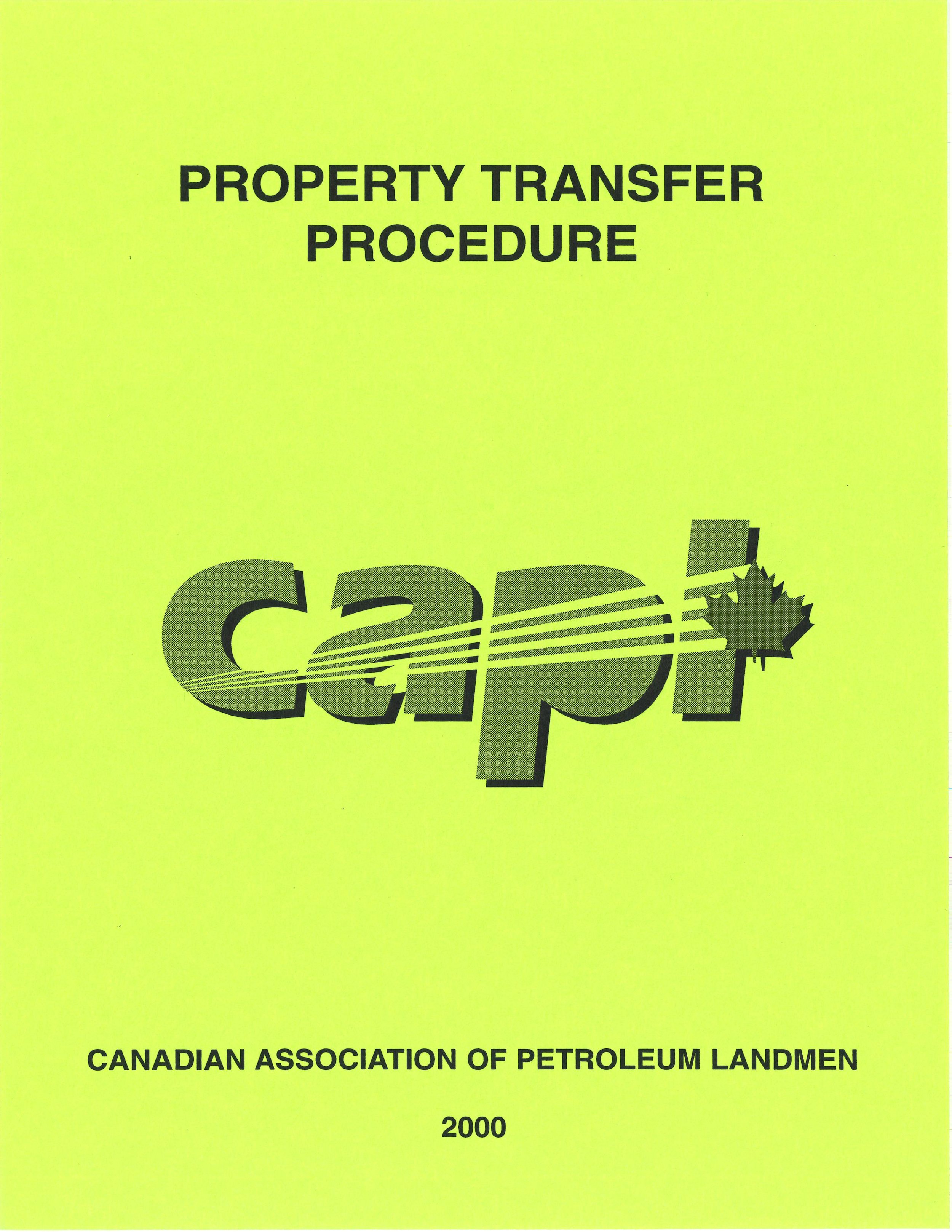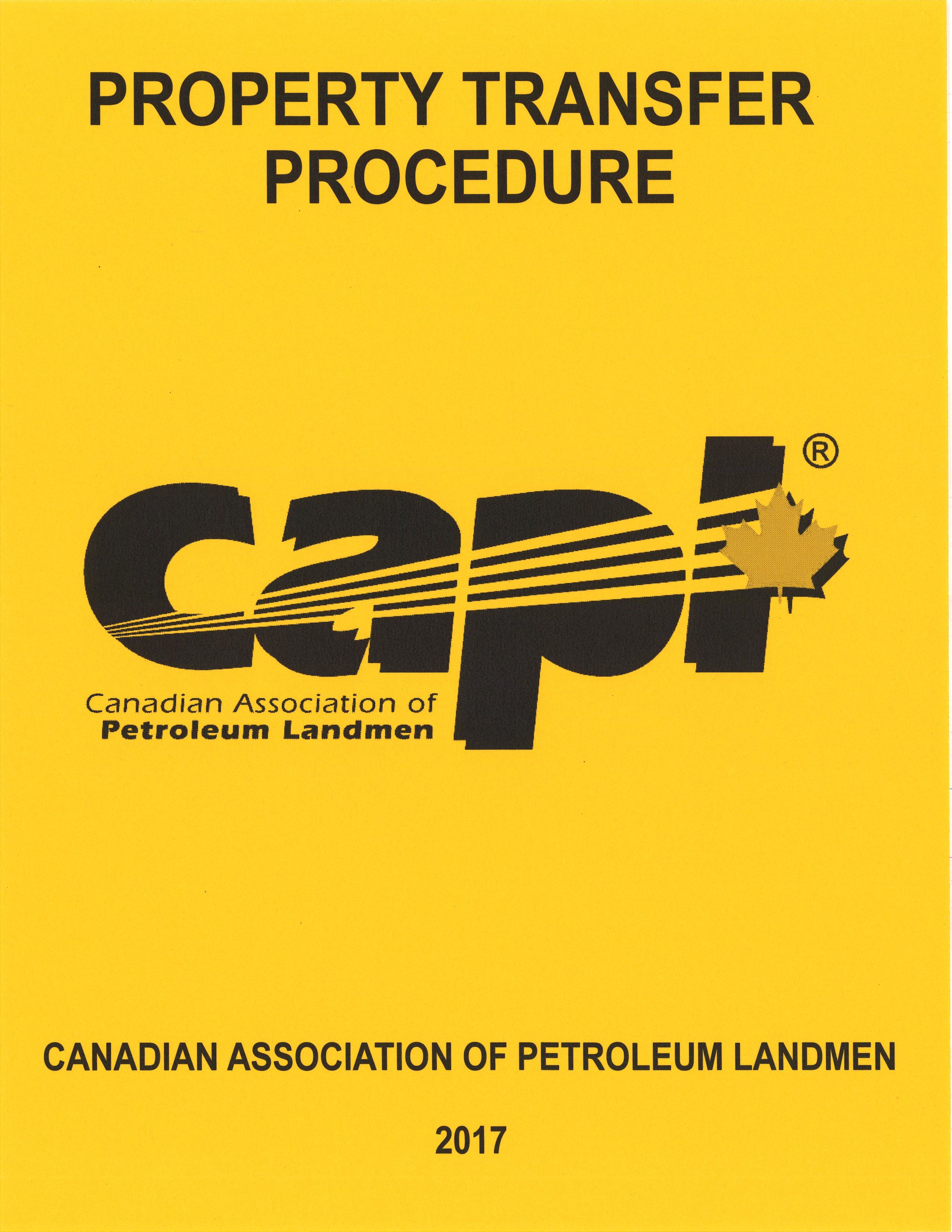CAPL Property Transfer Procedure-Introduction & Context
The 2017 CAPL Property Transfer Procedure (“PTP”) is the second version of the document. The 2000 version did not become widely accepted across industry, although it was commonly used without significant issues by smaller companies for low to modest value, simpler transactions.
The rationale for the initial creation of the document was relatively simple, and remains unchanged. Our industry uses many different purchase and sale agreement precedents. While there is a good degree of conceptual consistency, the construction and sequence of those documents are very inconsistent. Some of the impacts associated with the traditional approach include: (i) delays in the completion of documentation, generally through multiple drafts; (ii) the degree to which project personnel must often focus negotiations on the wording of procedural terms; (iii) a high risk that material issues are not being addressed appropriately; (iv) biased documents; and (v) inefficient processes that lead to waste. In simple terms, our belief is that an industry that challenges personnel to “do more with less” cannot afford to continue to address basically the same procedural terms in a multitude of different ways.
Standardization of the procedural aspects of the typical A&D agreement for at least low to modest value, straightforward transactions can address these problems and deliver ongoing returns to industry. It can: (i) reduce significantly the cycle time, effort and cost required to complete suitable documentation; (ii) provide a procedural framework that focuses negotiations on key business terms; (iii) level the playing field for the procedural aspects of transactions; (iv) streamline administrative processes, while increasing document and data integrity; and (v) focus resources on additional value creation opportunities.
Given the probable reluctance of companies to use the PTP for large scale transactions or other complex transactions in practice, the objective of the 2017 update project was to “make simple transactions simple again”. As a consequence, the updated PTP is focused on: (i) the typical low to modest value producing property transaction with limited complexity; and (ii) the potential use of the PTP as a platform for a simplified handling of transactions for undeveloped lands. This is shown in the sample transactions in Addendums III-VII of the annotated PTP. It is expected that the PTP will be of particular interest to smaller companies and their land personnel for their more typical transactions once they look at the 2017 document in the context of those Addendums.
The foundation design principle of the PTP is quite similar to that of the CAPL Farmout & Royalty Procedure – separation of the boilerplate, procedural elements of a transaction from the transaction specific terms in order to minimize the content required to be included in the Head Agreement and to mitigate the potential for parties to engage in prolonged debates about what far too often are ultimately just wording preferences.
To illustrate, a sale agreement for a modest value, straightforward non-operated producing property can often be documented with a two to three-page Head Agreement by including the PTP (See the Addendum III Case Study in the annotated PTP), versus the alternative of requiring parties to negotiate a custom 50 to 60-page agreement based on one party’s precedent. Similarly, a simple sale of a 100% interest in all zones of a five-section lease of undeveloped lands for $300,000 can potentially be documented with a 1 or 1.5-page Head Agreement by using the PTP (See the Addendum V Case Study in the annotated PTP), instead of a customized 10 to 20-page agreement.
The major 2017 update reflected the need to modify the document to address: (i) changes that were warranted based on industry’s experiences with the 2000 document; (ii) the modified emphasis in the 2017 document on modest value, more straightforward transactions and undeveloped lands sales and swaps (e.g., simplification, reduction of the number of elections, shift of additional content from the Head Agreement to the PTP); and (iii) a significant expansion of the annotations to provide greater insights for users of all experience levels on a real-time basis as they worked with the document.
The PTP is also likely to be used as a reference point when updating a precedent, reviewing a different form of agreement or assessing an issue under an agreement that did not use the PTP. The PTP will often offer additional insights that might enable parties to draft their agreement to avoid an issue or to provide a platform for an early stage resolution of an issue (or an internal de-escalation of an emerging issue).
It is also a very valuable training tool for personnel who want to learn more about the primary agreements used in A&D transactions, even if the party does not use the PTP for its own transactions.


